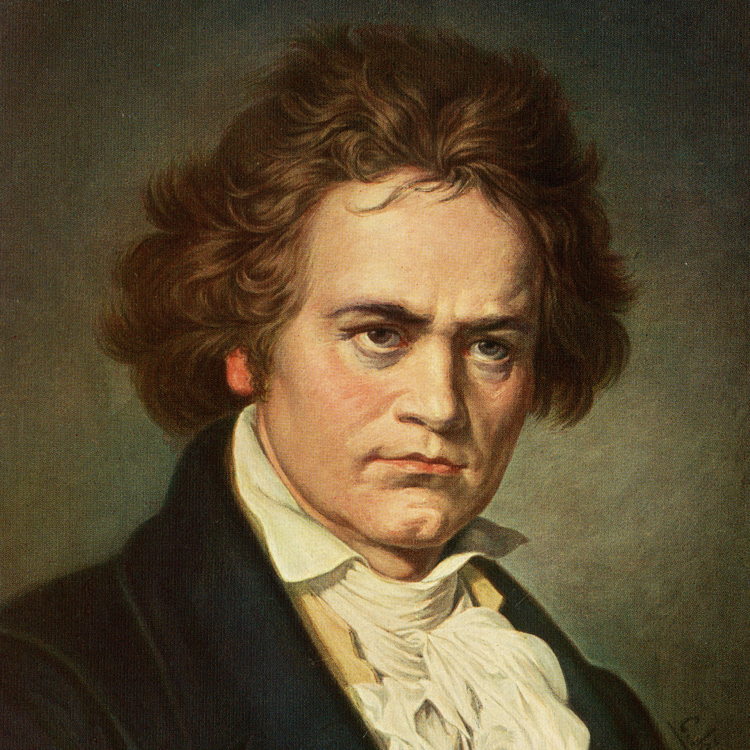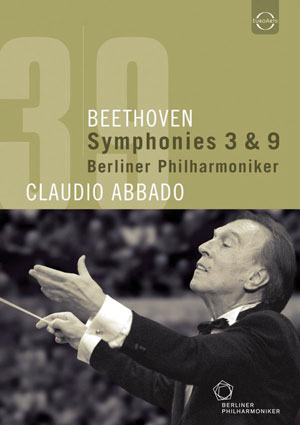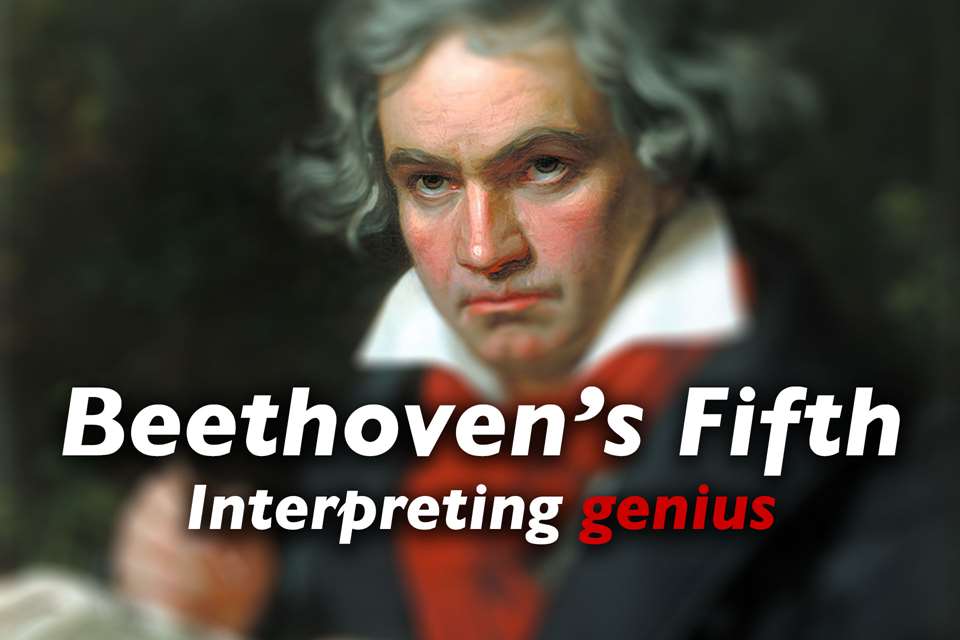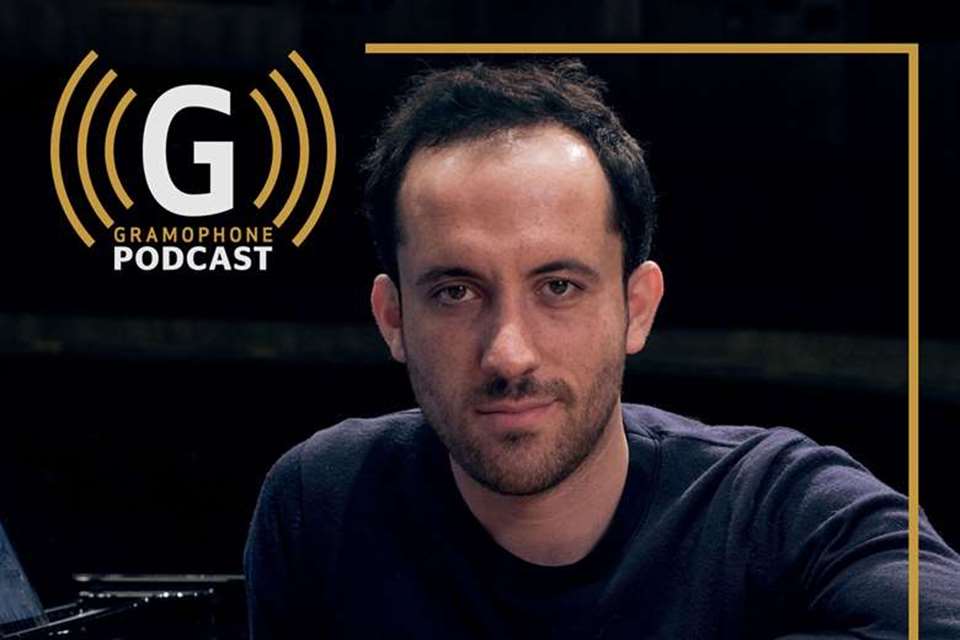A guide to the best recordings of Beethoven's Symphony No 3, 'Eroica'
Richard Osborne
Sunday, May 23, 2021
The ‘tremendous’ Third Symphony is both great music and a force beyond music. How, asks Richard Osborne, have conductors met this challenge during the work’s 90-year-long recorded history?

Writing in his diary in Houston on February 10, 1966, Sir John Barbirolli pondered, ‘Strange how the Eroica exhausts me these days. It may well be because I am really beginning to plumb its depths. It really is a tremendous piece, isn’t it?’
‘Tremendous’ is the right word for the Eroica, whether it’s used as a term of general approbation or as a description of a symphony before which musicians and audiences do, indeed, have cause to tremble.
In 1967 the BBC Symphony Orchestra invited Barbirolli to record the Eroica. Broad in tempo and richly sung, it is a reading that’s fathoms deep. Off-trend at the time, it obviously awed the BBC players, much as it had awed the Berlin Philharmonic earlier that same year. And herein lies a dilemma. When the Berliners played the Eroica under Karajan in London in 1958, Neville Cardus noted that the work was presented ‘as a strongly shaped example of musical art, not entirely as a force beyond music’. The fact is, this timeless manifestation of the imperturbability of the human spirit is both: an incomparably crafted artwork and a force beyond art.
The Eroica’s defining document, written during the time of its composition in 1802-3, is the Heiligenstadt Testament in which the 31-year-old Beethoven reveals how encroaching deafness has brought him close to suicide but how, counselled by his art, he has resolved on patience. ‘I hope my determination will remain firm to endure until it pleases the inexorable Parcae [Fates] to break the thread.’
The Eroica is a mountain of a symphony. The ascent is steep and problematic, with a peak (the terrifying diminished seventh at bar 166 of the Marcia funebre) that is reached after a fugal trek through a landscape which becomes ever more forbidding. The descent is a joy, yet we remain on the same mountain, and like all descents it also has it perils.
For that final movement Beethoven takes the world-defying, life-affirming Prometheus as his guide. It’s a movement, unique for its time, which is tied thematically to things that have gone before. When the fugal variations cease and a solo oboe sounds the start of the Poco andante, Beethoven is recasting at a higher pitch and in a major key one of the Marcia funebre’s darkest memories. Donald Tovey likened the moment to the opening of the gates of Paradise; and Wilhelm Furtwängler must have thought likewise, since he greatly extended the pause (edited out in his studio recordings by literal-minded technicians) before the oboe’s entry.
The Eroica is unique in another sense. It is the first symphony in history to invite what we now call ‘interpretation’ (as early as 1807, audiences were offered printed explanations), though interpretation was hardly a factor in its earliest days. As with many ‘period’ performances of the 1980s, simply playing the notes was a sufficient challenge. It was not until Wagner’s arrival on the scene in the 1840s that forensic examination of the music’s inner content began in earnest.
FURTWÄNGLER AND TOSCANINI
Furtwängler and Toscanini, two of the Eroica’s most powerful interpreters, were heirs to that forensic thinking. It also happens that their own most musically devastating performances date from the years before and during the Second World War, when Europe was once again blighted by conflict and the posturings of charismatic leaders, much as it had been at the time of the symphony’s creation.
That said, Arturo Toscanini always presented himself as a literalist. ‘Is-a not Napoleon! Is-a not ’Itler! Is-a not Mussolini! Is-a Allegro con brio!’ he screamed at the BBC SO during a rehearsal in 1937. A volcanic live performance with the NBC Symphony Orchestra dates from the following year, though it’s the live 1939 Victor recording which is to be preferred now that the sound has been tidied up. It marries high-tension drama with beautifully proportioned lines and a Marcia funebre that moves like a progress of the Stations of the Cross. It’s a very Italianate reading, the mood of the Verdi Requiem not far distant. Yet nothing can detract from its humanity or searing impact. If there is a downside, it’s that there are places in the finale where the playing seems rushed. There is a similarly vivid 1953 performance but the rhythms are a touch more sclerotic and one misses the oboe-playing of Robert Bloom which is so sublime a feature of the two pre-war performances.
Toscanini was peerless in the Seventh Symphony, where rhythm is the wellspring. In the Eroica – a vast symphonic drama where rhythm is linked to a new form of differential gearing which drives and co-ordinates Beethoven’s extraordinary aggregation of images and ideas – Wilhelm Furtwängler was the greater master. No conductor on record is more meticulous in his observation and realisation of Beethoven’s lavish array of dynamic markings. Given the depth of sound the Eroica demands if its impact is to be fully felt, this is an astonishing feat, both by him and the Vienna and Berlin orchestras with which he principally worked.
Since the release of the technically excellent post-war RIAS recordings, it’s arguable that Furtwängler’s live 1950 Berlin performance is the one to have, though in the high peaks of the Marcia funebre and in the finale, the 1944 Vienna performance remains unsurpassed. An early LP of the 1944 version transferred the single-microphone, reel-to-reel Magnetophon recording a semitone sharp, making the performance seem brighter (and faster) than it was. But it comes up very well in the newest CD transfer.
None of Furtwängler’s contemporaries in pre- and post-war Berlin came close to matching him in the Eroica, though Paul van Kempen’s 1951 Philips recording with Furtwängler’s own Berlin Philharmonic was rightly held in high regard.
THE EARLY YEARS
The effective history of the Eroica on record began with the arrival within a year of one another of electrical recording and the 1927 Beethoven centenary. Henry Wood, who had already made a heavily cut acoustic recording, and Albert Coates were the first out of the blocks: an apt phrase given the frenetic pace at which both conductors take the first movement. The Coates is not only fast but impossibly wayward. Wood has the better orchestra and an altogether surer structural grasp. His account of the Marcia funebre has pathos without sentimentality, a very English solution at the time. Wood’s younger contemporary Sir Thomas Beecham didn’t record the Eroica (one of the few Beethoven pieces he genuinely admired) until 1951-52 (for Columbia). Distinguished by fine wind-playing, it is a performance of intelligence and sensibility, characteristically alert.
Between 1927 and 1936 recordings by Max von Schillings, Hans Pfitzner, Willem Mengelberg and Serge Koussevitzky commanded the catalogue. Mengelberg draws glorious playing from the New York Philharmonic, but swooning string portamentos in the Marcia funebre are an offence in any age. Koussevitzky’s 1934 London Philharmonic Orchestra set was admired in its day, but his grasp of the symphony’s architecture would be firmer, and the playing no less vivid, when he re-recorded it with the Boston Symphony Orchestra in 1945 (RCA, 5/70 – also nla). In the end it was Felix Weingartner’s 1936 recording with the Vienna Philharmonic which cornered the pre-war market. ‘Good lean beef’ was the phrase coined by Peter Stadlen to describe Weingartner’s Beethoven. Only a somewhat matter-of-fact feel to the playing of the Marcia funebre and an indeterminate touch with the finale rob the performance of an assured place in the pantheon.
LP AND THE ARRIVAL OF STEREO
A good Eroica, Deryck Cooke noted in these columns, needs ‘not only a splendid line but a tense rhythmic impulse; not only a savage strength but a sense of mystery’. He was writing (with approval of everything except the recorded sound) about the second of Jascha Horenstein’s two LP recordings. There were a number of such recordings in the early days of LP, none more distinguished than Erich Kleiber’s with the Amsterdam Concertgebouw Orchestra. Classically conceived, with a fine balance between the symphony’s dramatic and expressive elements, it has many of the same qualities as Toscanini’s post-war accounts, without the sense of the machine being in permanent overdrive. Some thought George Szell a machine. ‘Yes, but a very good one,’ retorted Otto Klemperer. Szell’s 1957 Cleveland Eroica proves Klemperer’s point. Here is discipline without regimentation, and an attention to detail, meticulously registered by the orchestra, that is little short of breathtaking.
The arrival of stereophonic sound in 1957 was a red-letter day for the Eroica, both for the spatial dimensions it provided and for the revelations its brought in the finale, where Beethoven lavishes enormous care on the part-writing for the strings. Two great interpreters who survived into the stereo age and who continued to seat their violins antiphonally were Klemperer and Pierre Monteux.
It was a happy chance which led Decca, pioneer of state-of-the-art stereo sound, to invite the 82-year-old Monteux to record the Eroica in December 1957. It was his first recording for the company, and his first with the Vienna Philharmonic, that most musically experienced – one might say ‘historically informed’ – of Eroica orchestras. With Monteux as a wise and galvanising presence, the orchestra is at the peak of its powers, bringing a variety of weights and colours to a reading that is as remarkable for its structural reach as it is for its textural clarity and the keenness of its rhythmic articulation. ‘In the Eroica there is no status quo,’ noted Leonard Bernstein, whose 1964 New York Philharmonic performance is a wonderfully vibrant affair. Few conductors are more keenly aware of this than Monteux, whose long association with that other epoch-changing piece, Stravinsky’s The Rite of Spring, clearly stood him in good stead where the Eroica is concerned.
One thing that may have surprised the Vienna Philharmonic was Monteux’s textual purism: no extra winds and no extension to the trumpet line in the first-movement coda – this around 40 years before the publication of the modern Urtext, Jonathan Del Mar’s Bärenreiter edition. (Cited but woefully misrepresented by David Zinman in a 1998 Zurich Tonhalle Orchestra recording in which some of Beethoven’s most starkly drawn oboe lines are coyly embellished.)
Of Otto Klemperer’s two EMI studio recordings, it is his 1959 Abbey Road version which must have precedence, largely because of the space and degree of interior detailing stereo allows. Klemperer’s is a Stoic’s view of the work, one that pays homage to those ‘inexorable Fates’ to which Beethoven makes reference in the Heiligenstadt Testament. Yet Klemperer was also a great theatre conductor – his Fidelio was more or less without compare in its day – which gives the performance its own ineluctable life.
The 81-year-old Bruno Walter was no longer a divider of the violins when he made his 1958 Columbia Symphony Orchestra recording. It is a noble performance, rather more ‘together’ conceptually than his 1949 New York Philharmonic version. But with Walter’s death in 1962, and Klemperer’s in 1973, the age of the epic Eroica was largely over. The blueprint remained, but those who embraced it – conductors such as Sergiu Celibidache, Sir Georg Solti, Daniel Barenboim, and Sir Colin Davis in his 1991 Dresden version – could no longer fill the space or sustain the tension. An exception was Carlo Maria Giulini, whose 1978 Los Angeles recording has a touch more impetus than the strangely comatose reading that fellow countryman Victor De Sabata recorded in London in 1947. There are no divided strings and Giulini’s conducting of the finale hangs fire, but his account of the Marcia funebre is a powerful essay in stricken grandeur and attenuated hope.
FALLOW YEARS
The years between 1960 and the arrival of period performance in the 1980s were strangely fallow. It was as if, in the words of Oscar Wilde’s Lady Bracknell, ‘everyone has practically said whatever they had to say, which, in most cases, was probably not much’. Eugen Jochum recorded the Eroica four times between 1937 and 1976; all are different, yet all sound much the same. A succession of conductors – André Cluytens, Rudolf Kempe, Ferenc Fricsay, Karl Böhm and Rafael Kubelík – were invited to record the work with the Berlin Philharmonic on the assumption that their own and the orchestra’s experience would do the trick. It rarely did.
The dominant figure during these years was Herbert von Karajan. His earliest surviving Eroica is a 1944 studio recording with the Prussian State Orchestra, Berlin. Compared with his 1952 Philharmonia account, the earlier reading is seriously undeveloped, though it offers a theatrically powerful account of the Marcia funebre. Karajan’s essentially lyric-dramatic view of the symphony – Cardus’s ‘strongly shaped example of musical art’ – finally came of age in his 1962 Berlin recording, though it is arguable that his finest Eroica was his last, made in Berlin in 1984. There is an added urgency here that comes at no cost to the reading’s Walter-like humanity and breadth of phrase.
For the rest, it was the smaller stalls which offered the fresher produce. Enigma gave us James Loughran’s finely schooled reading with the Hallé (2/77 – nla) and Symphonica let Wyn Morris loose on the work (12/77 – also nla). A lifelong Furtwängler admirer, Morris conducts the Eroica much as Richard Burton would have declaimed it, if such a thing were possible.
THE PERIOD REVOLUTION
As the digital age dawned, only Günter Wand, among traditionalist interpreters, gave much satisfaction, serving up his Weingartner-style good lean beef. There was immense relief, therefore, when the early music movement stepped up to the plate.
Not everything worked. The best period-instrument accounts of the Eroica are closely edited studio recordings. Live performances, such as Frans Brüggen’s large-scale, combative account with the Orchestra of the 18th Century, were generally too poorly tuned and executed to bear repetition. A classic example of the record-maker’s craft is Christopher Hogwood’s recording with the Academy of Ancient Music, an exquisitely groomed affair whose only omission is a sense of the sheer scale and danger of the piece. John Eliot Gardiner and the Orchestre Révolutionnaire et Romantique deliver those qualities in spades with pacey, virtuoso playing. Alas, the speed of delivery in the outer movements makes it virtually impossible to hear the music. By the stopwatch Roger Norrington is just as quick, but his relish for the music’s inner content – salient detail turning up like sixpences in an old-fashioned Christmas pudding – is thrilling to hear, as is the superlative playing of the London Classical Players.
If performances such as these helped throw new light on the symphony, near disaster followed as the ‘period’ aesthetic took hold, convincing over-ambitious chamber ensembles, and conductors bent on forcing modern symphony orchestras into the straitjacket of a ‘period’ style, that by adopting the period formula they, too, might come up with comparable insights into this titanic work.
One particularly damaging piece of pseudo-historical hokum was the claim that the Eroica could or should be played with an orchestra, as Richard Hickox put it, ‘of the size Beethoven expected when he wrote it’ – as if the Eroica were conceived to accommodate a particular space or style. (In Beethoven’s Vienna, the city’s differing locations determined an orchestra’s size and, indeed, the speeds at which it might play.) In order to move Michelangelo’s David to its appointed resting place, the Florentines had to knock down the walls of the Opera del Duomo where it was sculpted; to release Beethoven’s Promethean utterance from its chains, new orchestral strategies – new ways of articulating and pacing the music – had to be devised.
The finest ‘chamber’ Eroica is Nikolaus Harnoncourt’s, though the Chamber Orchestra of Europe was no ordinary chamber orchestra. In size and character, this hand-picked 50-strong ensemble predicts the slimmed-down Berlin Philharmonic which COE Artistic Director Claudio Abbado would deploy in his own memorable 2001 Rome Eroica. Harnoncourt’s is a mainstream modern-instrument performance, buoyed by its own vitality and informed by the vision of a musician whose mind was steeped in the old ways of doing things. As such, it is light years away from the legion of overquick and punitively wham-bam chamber-orchestra versions of Sir Charles Mackerras, Thomas Dausgaard and others.
THE SYMPHONY IN A NEW CENTURY
Nowadays, speed appears to be de rigueur, yet as Channan Willner noted in an article in the Musical Times in February 1990, momentum in the German tradition has less to do with speed, more to do with the pacing and shaping of a symphony’s dramatic and rhetorical design. One of the fastest recent performances comes from Riccardo Chailly and the Leipzig Gewandhaus Orchestra. The first movement, in which Chailly manages to combine high-octane drive with an appropriate degree of expressivity, is a tour de force. But speed is addictive, and it is this which ruins the later stages of the Marcia funebre and the finale, where there is barely a hint of joy or spiritual uplift.
Precipitate accounts of the Marcia funebre, once the accelerations begin at the oboe-led maggiore, are nothing new. (There is a particularly alarming example from the 91-year-old Leopold Stokowski.) But it is odd to find conductors such as Simon Rattle and the normally judicious Mariss Jansons falling foul of this, as Beethoven’s dubiously fast metronome mark (dated 1817) is pursued and even overtaken. That said, there is a properly Beethovenian feel to the Jansons and to Rattle’s Vienna and Berlin accounts, which is not the case with the speedy and over-refined – almost Mendelssohnian – readings of conductors such as Paavo Järvi and Osmo Vänskä.
The recording which draws together the more pertinent strands of latter-day thinking about the Eroica, and does so with a refinement of musical execution which protests little but says much, is Claudio Abbado’s live performance in Rome in 2001.
THE EROICA ON FILM
The DVD of Abbado’s Rome Eroica is one of just two that merit mention. The first is a 1971 bespoke film directed by one of the founding fathers of the modern music video, Hugo Niebeling, with Karajan conducting the Berlin Philharmonic. Niebeling seats the players in three steeply raked inverted triangles, looking a little like ascending files of seats in an ancient Greek theatre with the conductor placed on the circular orkh¯estra below. There are some striking visual effects at key moments in this thrillingly articulated performance, though there would have been more had Karajan not re-edited the film. In 2009, Niebeling released the original director’s cut.
The DVD of Claudio Abbado’s Rome performance is a model of its kind, with splendidly pertinent video direction by Bob Coles. The conductor-cam option in particular provides us with a fascinating aural-visual experience, sharpening our sense of the reading itself while at the same time providing unique insights into the mechanisms through which this astonishing artwork functions.

TOP CHOICE
VPO / Furtwängler (Orfeo)
No conductor articulates the drama of the Eroica – human and historical, individual and universal – more powerfully or eloquently than Furtwängler. Of his 11 extant recordings, it is this 1944 Vienna account, closely followed by the 1950 Berlin version, which most merits pride of place.

PERIOD-INSTRUMENT CHOICE
LCP / Norrington (Erato)
With the London Classical Players, the finest period-instrument ensemble of its day, playing under the direction of the most insightful and theatrically aware ‘period’ Beethovenian of the time, this gives us a sense of what, in an ideal world, an early Eroica might have sounded like.

DVD CHOICE
BPO / Abbado (Euro Arts)
Filmed in Rome in 2001 with the 67-year-old Claudio Abbado directing a youthful-looking ‘touring’ Berlin Philharmonic, this DVD offers fascinating insights into how a front-rank conductor and informed interpreter of the Eroica articulates and manages the symphony live in performance.

STEREO CHOICE
VPO / Monteux (Decca)
With state-of-the art stereophonic sound doing full justice to Monteux’s classically correct orchestral layouts, and with the Vienna Philharmonic in vintage form, this is a thrillingly ‘complete’ account. Large-scale yet vital, it’s what Austro-Germans call werktreu, true to the original.
SELECTED DISCOGRAPHY
Date / Artists / Record company (review date)
1926 Queen’s Hall Orch / Wood / Beulah 2PD3 (4/27R)
1936 VPO / Weingartner / Naxos 8 110956 (11/36R)
1939 NBC SO / Toscanini / Music & Arts CD1275 (12/41R)
1944 VPO / Furtwängler / Orfeo C834 118Y (7/13R)
1944 Prussian St Orch / Karajan / Koch Schwann 315092 – nla
1950 BPO / Furtwängler / Audite AUDITE21 403 (9/09)
1950 Concertgebouw Orch / E Kleiber / Decca 482 3952 (4/51R)
1951 BPO / Van Kempen / Decca Eloquence ELQ482 0270 (12/54R)
1951-52 RPO / Beecham / Sony SMK89887 – nla; Mastercorp Pty Ltd (1/54R)
1952 Philharmonia / Karajan / Warner 2564 63373-5 (7/53R)
1957 Südwestfunk Orch / Horenstein / Vox 7807 – nla; BNF Collection (4/60R)
1957 VPO / Monteux / Decca Eloquence ELQ480 8895 (11/63R)
1957 Cleveland Orch / Szell / Sony 88883 73715-2 (2/58R)
1958 Columbia SO / Walter / Sony 88875 12391-2 (3/61R)
1959 Philharmonia / Klemperer / EMI 404275-2 (3/62R)
1962 BPO / Karajan / DG 463 088-2GB5 (2/63R)
1964 NYPO / Bernstein / Sony 88883 71833-2 (10/66R)
1967 BBC SO / Barbirolli / Barbirolli Society SJB1040 (3/68R)
1971 BPO / Karajan / DG/Unitel 073 4107GH3 (5/06)
1978 Los Angeles PO / Giulini / DG 447 444-2GOR (5/79R, 8/96)
1984 BPO / Karajan / DG 439 002-2GHS (6/86R)
1985 NDR SO / Wand / RCA 88697 71144-2 (3/86R)
1986 Academy of Ancient Music / Hogwood / Decca 452 551-2OC5 (11/86R)
1987 Orch of the 18th Century / Brüggen / Decca 478 7436DC7 (11/88R)
1987 London Classical Players / Norrington / Erato 083423-2 (4/89R)
1990 COE / Harnoncourt / Teldec 2564 63779-2 (11/91R)
1993 Orch Révolutionnaire et Romantique / Gardiner / Archiv 477 8643AB5 (11/94R)
2001 BPO / Abbado / DG 471 488-2GH (11/08R)
2001 BPO / Abbado / EuroArts 205 1138 (5/09)
2002 VPO / Rattle / EMI 915624-2 (4/03)
2008 Leipzig Gewandhaus Orch / Chailly / Decca 478 3494DH (A/11R)
2012 Bavarian RSO / Jansons / BR-Klassik 900119 (12/13)
2015 BPO / Rattle / BPO BPHR160091 (6/16)
Welcome to Gramophone ...
We have been writing about classical music for our dedicated and knowledgeable readers since 1923 and we would love you to join them.
Subscribing to Gramophone is easy, you can choose how you want to enjoy each new issue (our beautifully produced printed magazine or the digital edition, or both) and also whether you would like access to our complete digital archive (stretching back to our very first issue in April 1923) and unparalleled Reviews Database, covering 50,000 albums and written by leading experts in their field.
To find the perfect subscription for you, simply visit: gramophone.co.uk/subscribe













